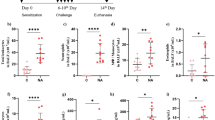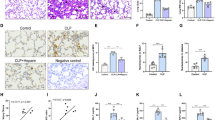Abstract
Metal nanoparticles have attracted strong interest, because they open up a new field in fundamental science and have potential technological applications. The mechanisms of cytotoxic action as well as cellular target for metal nanoparticles remain to be elucidated. In the present study, the differences in the toxicity and cytokine production between mono- and co-culture with murine alveolar macrophages (RAW264.7) and alveolar epithelial cells (MLE12) in the presence of metal nanoparticles were elucidated. Among eight nanoparticles tested, n-Co, n-Cu, and n-Zn had higher degrees of cytotoxicity toward both cells than the other particles. These three metal nanoparticles induced a high degree of apoptotic damages, which, in turn, was correlated with extent of cytotoxicity at a lower concentration tested. In most cases, extent of apoptotic damage was higher with co-culture than with mono-culture for both cells due to a communication through TNF-α and other unknown factors between epithelial cells and macrophages. These results may be crucial in understanding the nanoparticle-induced apoptotic responses in the lung.
Similar content being viewed by others
References
Bönnemann H and Richards RM (2001) Nanoscopic metal particles-synthetic methods and potential applications. Eur J Inorg Chem 2001, 2455–2480.
Brown DM, Wilson MR, MacNee W, Stone V, and Donaldson K (2001) Size-dependent proinflammatory effects of ultrafine polystyrene particles: A role for surface area and oxidative stress in the enhanced activity of ultrafines. Toxicol Appl Pharmacol 175, 191–199.
Chen HW, Su SF, Chien CT, Lin WH, Yu SL, Chou CC, Chen JJ, and Yang PC (2006) Titanium dioxide nanoparticles induce emphysema-like lung injury in mice. FASEB J 20, E1732-E1741.
Crestani B and Aubier M (1998) Inflammatory role of alveolar epithelial cells. Kidney Int 53 (Suppl. 65), S88-S93.
Cromwell O, Hamid Q, Corrigan CJ, Barkans J, Meng Q, Collins PD, and Kay AB (1992) Expression and generation of interleukin-8, IL-6 and granulocyte-macrophage colony-stimulating factor by bronchial epithelial cells and enhancement by IL-1 beta and tumour necrosis factor-alpha. Immunology 77, 330–337.
Donaldson K, Tran CL, and MacNee W (2002) Deposition and effects of fine and ultrafine particles in the respiratory tract. Eur Respir Mon 7, 77–92.
Dreher KL (2004) Health and environmental impact of nanotechnology: toxicological assessment of manufactured nanoparticles. Toxicol Sci 77, 3–5.
Driscoll KE, Carter JM, Hassenbein DG, and Howard B (1997) Cytokines and particle-induced inflammatory cell recruitment. Environ Health Perspect 105 (Suppl. 5), 1159–1164.
Driscoll KE (2000) TNF-α and MIP-2: Role in particle-induced inflammation and regulation by oxidative stress. Toxicol Lett 112–113, 177–184.
Hiura TS, Kaszubowski MP, Li N, and Nel AE (1999) Chemicals in diesel exhaust particles generate reactive oxygen radicals and induce apoptosis in macrophages. J Immunol 163, 5582–5591.
Lanone S, Rogerieux F, Geys J, Dupont A, Maillot-Marechal E, Boczkowski J, Lacroix G, and Hoet P (2009) Comparative toxicity of 24 manufactured nanoparticles in human alveolar epithelial and macrophage cell lines. Part Fibre Toxicol 6, 14.
Mosmann T (1983) Rapid colorimetric assay for cellular growth and survival: Application to proliferation and cytotoxicity assays. J Immunol Methods 65, 55–63.
Oberdörster G, Sharp Z, and Elder AP (2004) Translocation of inhaled ultrafine particles to the brain. Inhal Toxicol 16, 437–445.
Park S, Lee YK, Jung M, Kim KH, Chung N, Ahn EK, Lim Y, and Lee KH (2007) Cellular toxicity of various inhalable metal nanoparticles on human alveolar epithelial cells. Inhal Toxicol 19 (Suppl. 1), 59–65.
Parra SC, Burnette R, Price HP, and Takaro T (1986) Zonal distribution of alveolar macrophages, type II pneu-monocytes, and alveolar septal connective tissue gaps in adult human lungs. Am Rev Respir Dis 133, 908–912.
Renwick LC, Brown D, Clouter A, and Donaldson K (2004) Increased inflammation and altered macrophage chemotactic responses caused by two ultrafine particle types. Occup Environ Med 61, 442–447.
Serita F, Kyono H, and Seki Y (1999) Pulmonary clearance and lesions in rats after a single inhalation of ultrafine metallic nickel at dose levels comparable to the threshold limit value. Ind Health 37, 353–363.
Thubagere A and Reinhard BM (2010) Nanoparticle-induced apoptosis propagates through hydrogen-peroxide-mediated bystander killing: insights from a human intestinal epithelium in vitro model. ACS Nano 4, 3611–3622.
Wang S, Young RS, Sun NN, and Witten ML (2002) In vitro cytokine release from rat type II pneumocytes and alveolar macrophages following exposure to JP-8 jet fuel in co-culture. Toxicology 173, 211–219.
Wottrich R, Diabaté S, and Krug HF (2004) Biological effects of ultrafine model particles in human macrophage and epithelial cells in mono- and co-culture. Int J Environ Health 207, 353–361.
Xaus J, Comalada M, Valledor AF, Lloberas J, Lopez-Soriano F, Argiles JM, Bogdan C, and Celada A (2000) LPS induces apoptosis in macrophages mostly through the autocrine production of TNF-alpha. Blood 95, 3823–3831.
Author information
Authors and Affiliations
Corresponding author
Rights and permissions
About this article
Cite this article
Kim, K.H., Kim, S.Y., Chun, BH. et al. Apoptotic damage during co-culture of lung epithelial cells and macrophages in the presence of metal nanoparticles is modulated by TNF-α from macrophages. J. Korean Soc. Appl. Biol. Chem. 54, 30–36 (2011). https://doi.org/10.3839/jksabc.2011.004
Received:
Accepted:
Issue Date:
DOI: https://doi.org/10.3839/jksabc.2011.004




